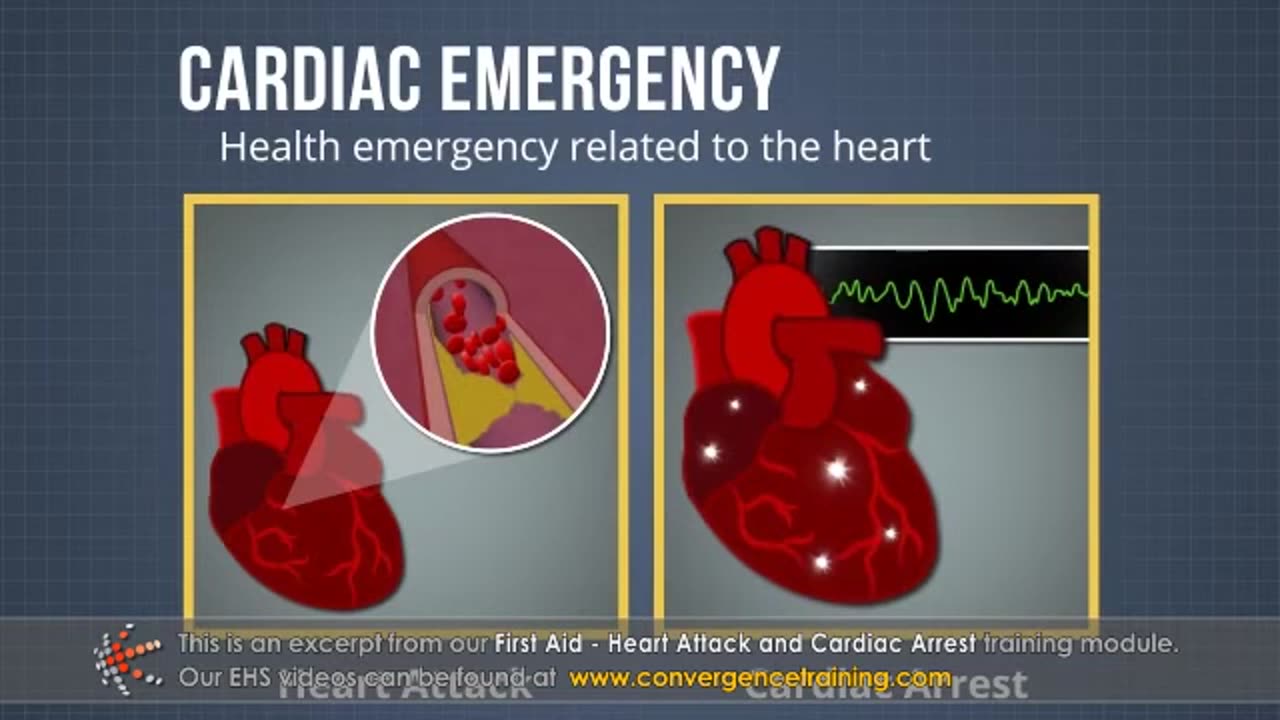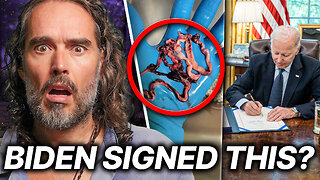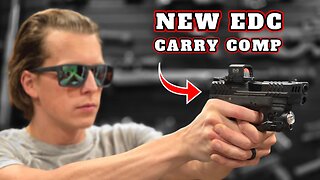Premium Only Content

First Aid - Heart Attack and Cardiac Arrest Training
**First Aid Training for Heart Attack and Cardiac Arrest** is vital for preparing individuals to respond effectively in critical emergencies. Below is a structured guide for training, focusing on recognizing symptoms, providing immediate care, and using lifesaving techniques like CPR and AEDs.
---
## **1. Understanding Heart Attack vs. Cardiac Arrest**
### **Heart Attack**:
- A blockage in blood flow to the heart.
- Symptoms may appear gradually but can lead to cardiac arrest if untreated.
### **Cardiac Arrest**:
- A sudden loss of heart function due to electrical dysfunction.
- Immediate action is required to save the person's life.
---
## **2. Recognizing Symptoms**
### **Heart Attack Symptoms**:
1. Chest discomfort:
- Pressure, tightness, or pain lasting more than a few minutes.
2. Radiating pain:
- Discomfort spreading to arms, back, neck, jaw, or stomach.
3. Shortness of breath:
- Can occur with or without chest pain.
4. Additional signs:
- Cold sweats, nausea, or dizziness.
### **Cardiac Arrest Symptoms**:
1. Sudden collapse.
2. No breathing or gasping.
3. No pulse or signs of circulation.
---
## **3. Immediate Action for Heart Attack**
1. **Call Emergency Services (911 or local number)**:
- Early medical intervention saves lives.
2. **Calm and Position the Person**:
- Help them sit or lie down in a comfortable position.
3. **Loosen Tight Clothing**:
- Improve circulation and comfort.
4. **Administer Aspirin (if appropriate)**:
- If not allergic, give 1 adult aspirin (325 mg) or 2 baby aspirins (81 mg each) to chew.
5. **Monitor Symptoms**:
- Be prepared to perform CPR if the person loses consciousness.
---
## **4. Immediate Action for Cardiac Arrest**
### **A. Perform CPR (Cardiopulmonary Resuscitation)**:
1. **Check Responsiveness**:
- Shake the person gently and shout their name.
2. **Check for Breathing**:
- If no normal breathing is observed, begin CPR immediately.
3. **Start Chest Compressions**:
- Place the heel of one hand on the center of the chest, with the other hand on top.
- Compress at least 2 inches deep at a rate of 100–120 compressions per minute.
- Allow the chest to fully recoil between compressions.
4. **Rescue Breaths (if trained)**:
- After 30 compressions, give 2 rescue breaths.
- Tilt the head back, lift the chin, pinch the nose, and blow into the mouth for 1 second.
### **B. Use an AED (Automated External Defibrillator)**:
1. **Turn on the AED**:
- Follow the voice prompts.
2. **Attach Pads**:
- Place pads on the person's bare chest as indicated on the device.
3. **Clear the Area**:
- Ensure no one is touching the victim.
4. **Deliver Shock** (if advised):
- Press the button to deliver the shock.
- Resume CPR immediately after the shock.
---
## **5. Preventing Common Mistakes**
- **Don’t Delay Calling for Help**:
- Always activate emergency services first.
- **Don’t Assume the Person Will Recover Without Assistance**:
- Every second counts, especially in cardiac arrest.
- **Avoid Excessive Force in CPR**:
- Proper technique is crucial for effectiveness.
---
## **6. Post-Emergency Care**
- **Heart Attack**:
- Reassure the person until professional help arrives.
- Collect relevant medical information (e.g., medications, allergies).
- **Cardiac Arrest**:
- Continue CPR and AED use until help arrives or the person regains consciousness.
---
## **7. Training Exercises**
### **Simulated Scenarios**:
- Practice identifying heart attack and cardiac arrest symptoms in role-play exercises.
- Hands-on practice with CPR mannequins for chest compressions and rescue breaths.
- AED operation using training devices.
### **Realistic Timing Drills**:
- Emphasize rapid response from recognition to CPR initiation (within 1–2 minutes).
---
## **8. Understanding Legal Protections**
- **Good Samaritan Laws**:
- Encourage participants to act without fear of legal repercussions for providing emergency care.
---
## **9. Additional Resources**
- **CPR Certification**:
- Encourage participants to become certified through organizations like the Red Cross or American Heart Association.
- **First Aid Kit Familiarization**:
- Highlight the importance of having aspirin and other essentials available.
---
### **Key Takeaways**
1. **Recognize symptoms early** and act quickly.
2. **Call for help** before starting first aid.
3. **Perform CPR and use an AED** if needed.
4. **Stay calm** and provide continuous care until help arrives.
Would you like visual aids, printable guides, or further explanation of any specific step?
-
 DVR
DVR
Geeks + Gamers
2 hours agoDisney RATIO'D on Christmas Day | Mufasa Embarrassed By Sonic 3
6.14K1 -
 LIVE
LIVE
Sm0k3m
6 hours agoPlaying games on Rumble
258 watching -
 10:37
10:37
Russell Brand
2 days agoHow is this even allowed?
101K690 -
 1:37:26
1:37:26
Real Coffee With Scott Adams
2 hours agoEpisode 2701 CWSA 12/26/24
26.9K20 -
 2:58:58
2:58:58
Wendy Bell Radio
7 hours ago9 Steps Ahead
51.3K105 -
 LIVE
LIVE
LFA TV
15 hours agoTIME FOR A NEW SPEAKER! | LIVE FROM AMERICA 12.26.24 11am EST
5,297 watching -
 1:40:22
1:40:22
Game On!
13 hours ago $3.86 earnedNFL Thursday Night Football Seahawks at Bears EXPERT Picks!
25.2K9 -
 1:50:54
1:50:54
xBuRnTx
2 hours agoWho's Ready for New Years!
16.3K1 -
 12:09
12:09
Tactical Advisor
15 hours agoSmith & Wesson Shield Plus Carry Comp
12K1 -
 4:35:25
4:35:25
Father Russell
8 hours agoDelta Force | Not A Woman? | Mad Martigan Time
54.8K5